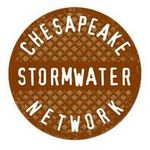
Difference between revisions of "Operation and maintenance of permeable pavement"
m |
m |
||
| Line 1: | Line 1: | ||
{{alert|Permeable pavement can be an important tool for retention and detention of stormwater runoff. Permeable pavement may provide additional benefits, including reducing the need for de-icing chemicals, and providing a durable and aesthetically pleasing surface.|alert-success}} | {{alert|Permeable pavement can be an important tool for retention and detention of stormwater runoff. Permeable pavement may provide additional benefits, including reducing the need for de-icing chemicals, and providing a durable and aesthetically pleasing surface.|alert-success}} | ||
| + | |||
| + | [[File:General information page image.png|right|100px|alt=image]] | ||
==Maintenance and maintenance agreements== | ==Maintenance and maintenance agreements== | ||
Revision as of 19:47, 8 March 2021
Green Infrastructure: Permeable pavement can be an important tool for retention and detention of stormwater runoff. Permeable pavement may provide additional benefits, including reducing the need for de-icing chemicals, and providing a durable and aesthetically pleasing surface.
Contents
Maintenance and maintenance agreements

The Chesapeake Stormwater Network has developed two videos that illustrate inspection and maintenance of LID BMP practices, including permeable pavement. NOTE: These videos provide useful tips but should not be used for compliance with Minnesota permits.
In addition to the design items previously mentioned, some key actions help ensure the long-term performance of permeable pavement during its operation life. The most frequently cited maintenance problem is surface clogging caused by organic matter and sediment, which can be reduced by the following measures:
- Periodic Vacuuming – The pavement surface is the first line of defense in trapping and eliminating sediment that may otherwise enter the stone base and soil subgrade. The rate of sediment deposition should be monitored and vacuuming done at least two times per year. A typical vacuum cleaning schedule may include the end of winter (April) and after autumn leaf-fall (November). Maintenance records should be maintained by the owner. The vacuuming frequency should be adjusted according to the intensity of use and deposition rate on the permeable pavement surface. At least one pass should occur at the end of winter. Regenerative air vacuum sweepers are the suggested means for regular surface cleaning. For neglected surfaces (i.e., those with no surface cleaning over several years) true vacuum sweepers have the most efficient removal of debris and fine particulates when compared with regenerative air or mechanical sweepers. However, areas on steep slopes or near curbs may limit vacuum sweeper performance (Brown 2013). If a true vacuum sweeper is used on PICP the removed aggregate in the joints should be replaced with the same material.
- Ongoing – Minimizing salt use or sand for de-icing and traction in the winter, keeping the landscaping areas well maintained and preventing soil from being washed onto the pavement helps increase its life. Less salt will be needed. However, such water should not be directed to irrigation uses.
- Maintenance Agreements - Maintenance agreements should note which conventional parking lot maintenance tasks must be avoided (e.g., sanding, re-sealing, re-surfacing, power-washing). Signs should be posted on parking lots to indicate their stormwater function and special maintenance requirements. When permeable pavements are installed on private residential or commercial property, owners must understand routine maintenance requirements. These requirements can be enforced via a deed restriction, drainage easement, maintenance agreement, performance bond, letter of credit or other mechanism enforceable by the local authority to help ensure that the permeable pavement is maintained and continues functioning. The local authority should use this MIDS guideline to establish measurable performance criteria for enforcing maintenance procedures. The mechanism should, if possible, grant authority for local agencies to enter the property for inspection or corrective action.
Maintenance inspection and maintenance checklists
Inspection and maintenance checklists have not been developed for the Minnesota Stormwater manual. We anticipate developing these in 2018. Below are several links to checklists developed by other organizations.
- Chagrin River Watershed Partners Permeable Pavement Inspection and Maintenance Checklist
- City of Franklin, Tennessee Stormwater Division Permeable Pavement Inspection and Maintenance Checklist
- Franklin Township, New Jersey, Permeable Pavement Maintenance Inspection Checklist
Links to additional information
- File:Pervious Pavement Maintenance Guide public use.pdf. (Source:Ramsey-Washington Watershed District)
- File:Grass Pavers Maintenance Guide public use.pdf. (Source:Ramsey-Washington Watershed District)
- Maintaining Permeable Pavements. North Carolina Cooperative Extension.
- Pervious Concrete Pavement Maintenance and Operations Guide. National Ready Mixed Concrete Association.
Related articles
- Overview for permeable pavement
- Types of permeable pavement
- Design criteria for permeable pavement
- Construction specifications for permeable pavement
- Assessing the performance of permeable pavement
- Operation and maintenance of permeable pavement
- Calculating credits for permeable pavement
- Case studies for permeable pavement
- Green Infrastructure benefits of permeable pavement
- Summary of permit requirements for infiltration
- Permeable pavement photo gallery
- Additional considerations for permeable pavement
- Links for permeable pavement
- References for permeable pavement
- Fact sheets for permeable pavement
- Requirements, recommendations and information for using permeable pavement BMPs in the MIDS calculator
